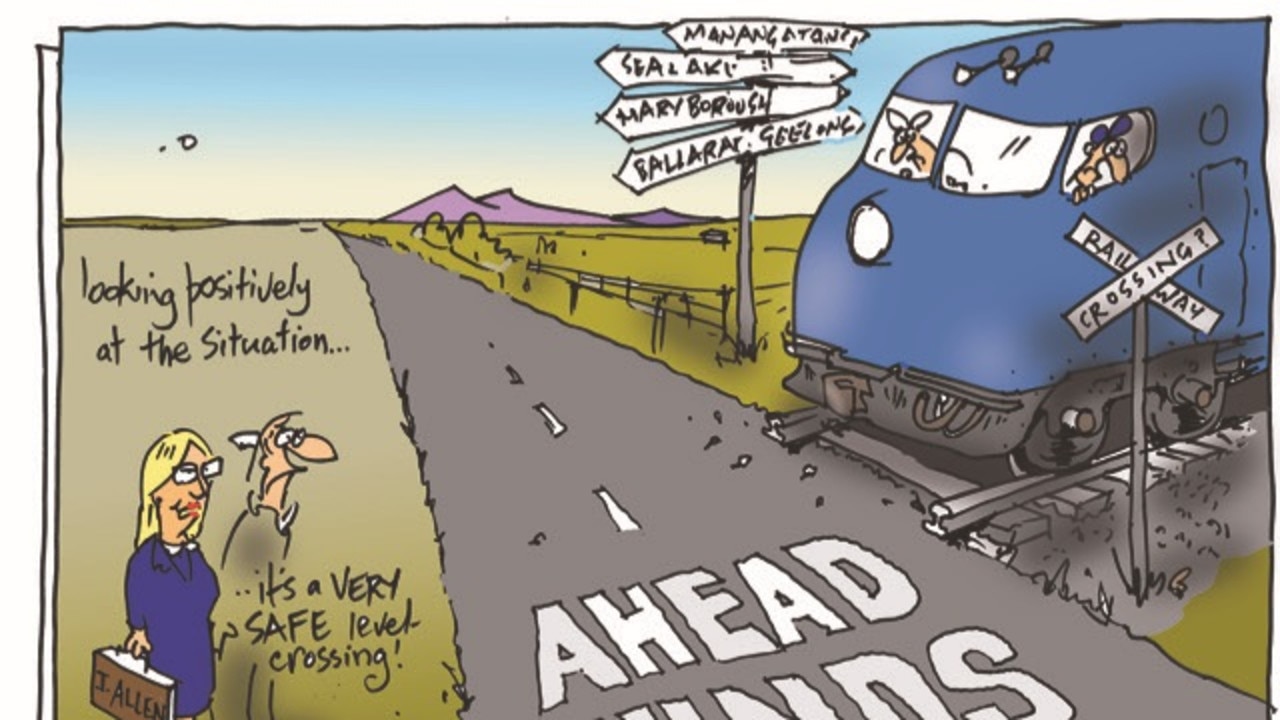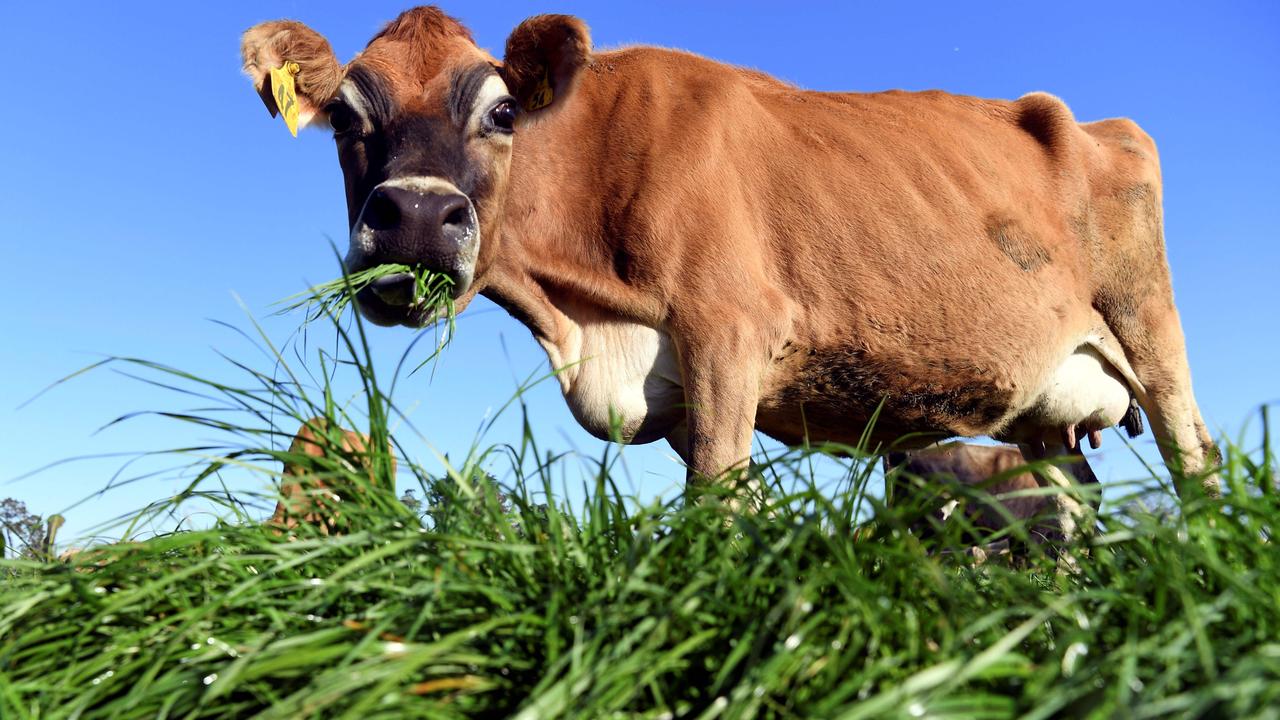National livestock toll from raging bushfires mounts
Kate Sutherland inspects the devastation on her burnt-out Upper Murray farm, as the national livestock toll mounts and the extent of the long-term damage to Australian agriculture emerges.

MORE than 56,000 livestock have perished in bushfires raging across Victoria, NSW and South Australia – and that toll will continue to rise.
It comes as the Federal Government yesterday announced a $115 million agriculture package to help farmers get back on their feet following the unprecedented blazes.
Bushfire-affected farmers will be eligible for cash grants up to $75,000 to help pay for carcass disposal, equipment and infrastructure, with an aim to roll payments out as soon as possible.
Representatives from the main agriculture sectors affected — including livestock, dairy and wine — will meet with Prime Minister Scott Morrison and Agriculture Minister Bridget McKenzie tomorrow to discuss bushfire relief and recovery.
Farmers are still tallying the damage from the fires, which have torn through almost seven million hectares across the three states and led to the deaths of 27 people.
Authorities have confirmed 56,365 animals dead so far, including 32,000 sheep in South Australia’s Kangaroo Island blaze – though locals report it could be closer to 100,000.
Agriculture Victoria yesterday confirmed 3946 livestock had died across the North East and East Gippsland, but that number would increase as officials gained access to more fire-affected properties.
It includes 1966 beef cattle and 1638 sheep. Victoria’s fires have also destroyed 33,180 hectares of pasture, 620ha in field crops, 700ha of softwood plantation, more than 11,400 tonnes of hay and silage and 119 hay sheds.
In NSW, more than 12,000 livestock have died in the fires since Christmas, including an estimated 6000 dairy cows on the south coast.
Rabobank senior animal proteins analyst Angus Gidley-Baird said livestock losses, combined with ongoing drought conditions, could see even tighter livestock supply numbers across markets.
“Breeding country has been affected by the fires so it is likely to be young and weaner cattle that we are looking at rather than finished cattle. They wouldn’t have flowed through the system until 12-18 months time,” Mr Gidley-Baird said.
“Given the number of sheep losses the wool market and lamb production could also be impacted but it is difficult to say until we know if the losses are breeding ewes or wethers.”
Victorian Farmers Federation president David Jochinke said getting access to farms was still a top priority, as well as fodder supplies and ensuring water sources.
“I have heard numerous stories about farmers not being able to get livestock out to markets or trucks in,” he said.
Elders Bairnsdale agent Morgan Davies said cattle numbers would be down at the upcoming mountain calf sales, which are held annually in March and see about 10,000 calves sold.
“It has been tough but we yarded 1000 head of cattle at the Bairnsdale store sale last Friday and will continue to have fortnightly sales from here,” Mr Davies said.
“Prices have still been pretty solid despite the fires with heavy feeder steers making 310-330c/kg.”
DairyConnect’s Shaughn Morgan said the long-term damage to the NSW south coast’s dairy industry and local communities was “certainly going to be in the tens of millions”.
“This will definitely have an impact on the number of dairy farmers that will remain in the industry,” Mr Morgan said.
“Those that may have been reconsidering whether to go or stay, this for them might be the straw that breaks the camel’s back.”
More than 30 dairy farms in the region were affected with fire damaging pastures and infrastructure, and road closures blocking vital access for milk tankers.
Bega chairman Max Roberts said between 800,000 to 900,000 litres of milk were lost due to the fires, with the company expecting a 1.8-2 million litre reduction in the total milk pool.
Australian Wine and Grape Incorporated chief executive Tony Battaglene said while the physical damage to vineyards was so far minimal, smoke taint was a major worry for all regions and testing was underway to monitor levels.
MORE: VICTORIAN LIVESTOCK TOLL REACHES 4000
GUILTY MUST PAY FOR FOR IGNORING WARNINGS
“Because the smoke is so early (in the season), we’ve never really had that before so we’re not really sure how that will transfer to grape quality,” Mr Battaglene said.
Mr Battaglene said the industry urgently needed assistance testing and tracking crops for smoke taint.
Milder conditions over the coming week may offer a chance to regroup – but a series of slow-moving storms could bring other hazards, with some areas at risk of flash flooding.
Storms could bring 30-50mm to some regions, though most areas will only see 5-10mm. Temperatures will largely remain in the high 20s to low 30s.



